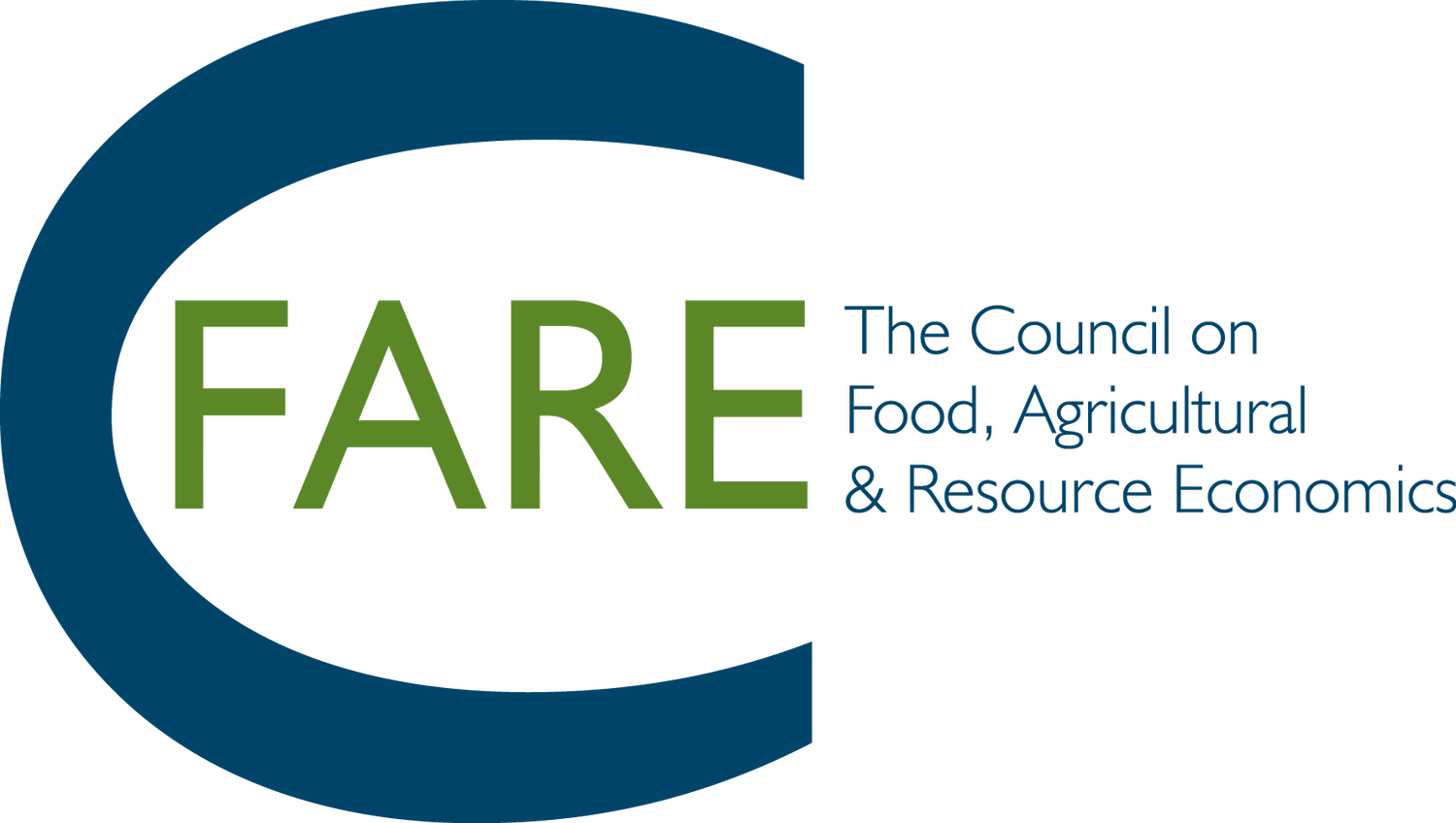Trade Policy Under The New Administration
To further our understanding of the status of global trade policy within The United States, C-FARE hosted a panel titled Global Trade Policy Under the New Administration. C-FARE hosted this free webinar on Monday, May 21st. Our panel of speakers consisted of four leaders in trade policy. Andrew Muhammad, a Professor and Blasingame Chair at the University of Tennessee and C-FARE Board Member moderated the discussion. Daniel Whitley, Acting Administrator at the USDA Foreign Agriculture Service, provided introductory remarks.
Panelists David Blanford (Pennsylvania State University), Jason Hafemeister (Secretary’s Trade Counsel USDA) and Sean Arita (Office of the Chief Economist USDA) discussed their ongoing work on U.S. trade policy.
David Blanford started off the panel with his presentation on “Trade-Related Measures and Climate Change Policies for Agriculture.” This presentation focused on the practical issues regarding taking climate impact into account by using environmental protection import taxes on foreign goods. Blanford stated that the U.S. Government “cannot only put a hypothetical climate mitigation tax on only imported goods according to the General Agreement on Tariffs and Trade (GATT) aspect of the World Trade Organization.” He then explained that the hypothetical climate tax on a specific good would have to be not only on imported goods but also domestic goods otherwise it will violate GATT. Blanford thinks it is incredibly unlikely that this will change unless specific exemptions are made by the WTO.
He wrapped up his presentation by providing an overview of the key issues facing U.S. Trade Policy and climate change by critiquing the “bottom-up approach” of the Paris Climate Agreement due to its lack of agreement on carbon pricing. He sees most forms of financial support for climate change mitigation and adaptation to be the most realistic path forward to combating climate change without generating strong objections from trade partners.
Jason Hafemeister began his presentation by highlighting the “Fruits of Globalization” which showed that extreme global poverty has decreased over time due to increasing global trade. He then continued by providing the audience with examples of twenty nations that all import over $1 billion in the US. Agricultural products a year to display who the emerging markets are such as Colombia, Singapore, Indonesia, and the Philippines.
Hafemeister ended his presentation with a slide that detailed changing public perception in America regarding international trade. Utilizing data from a recent Chicago Council Survey from June 2019, overall, 87% of American’s think international trade is good for the U.S. economy. This is a large change in the public perception of international trade from 2016 which was only 59% positive.
Sean Arita began his presentation by providing the audience with a graph titled “U.S Agricultural Exports to China over past 50 years.” This slide presented viewers with the data that China purchased $26 B in agricultural exports in 2012 and only $9.2 B in 2018 due to retaliatory tariffs. Arita went into detail on the crash in agricultural exports to China that was caused by Chinese retaliatory tariffs due to the on-going trade war that was started under the Trump Administration.
Arita thinks that the Phase One Agreement with China from Jan 15, 2020, is part of the increase in exports to China that we have begun to see recently. This agreement requires China to purchase $40 B in U.S Agricultural exports per year. To go into deeper detail on what is currently increasing U.S Agricultural exports to China he provides two examples, pork, and corn. Due to African Swine Fever, China has had to replace a portion of its swine population with American pigs due to disease. Also, China is currently consuming more Corn than they produce, which explains their recent increase in their import of American corn.
Overall, Arita sees us on a positive trajectory away from the trade war that hurt American exports to China but is cautious to see if China sticks to all aspects of the Phase One Trade Agreement.
Q&A with the audience followed the panelists’ presentations.
This program is supported in part by the Agricultural and Applied Economics Association and the US Department of Agriculture’s Economic Research Service, and the National Agricultural Statistics Service.
Those who register but cannot attend our webinar can always view a recording of it later at the council’s YouTube channel.
